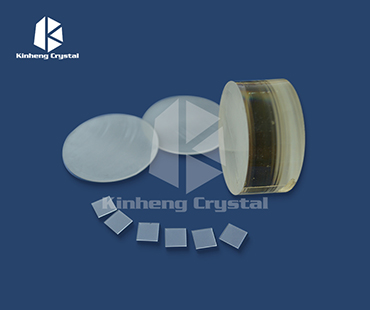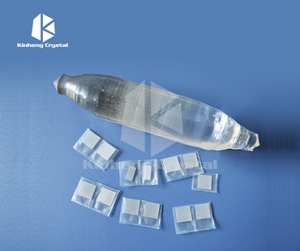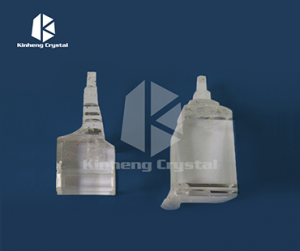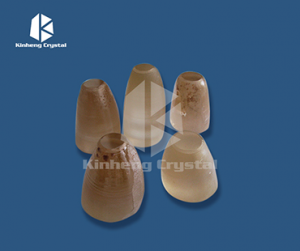LiNbO3 Substrate
Description
LiNbO3 Crystal has unique electro-optical, piezoelectric, photoelastic and nonlinear optical properties. They are strongly birefringent. They are used in laserfrequency doubling, nonlinear optics, Pockels cells, optical parametric oscillators, Q-switching devices for lasers, other acousto-opticdevices, optical switches for gigahertz frequencies, etc. It is an excellent material for manufacture of optical waveguides, etc.
Properties
| Growth Method |
Czochralski method |
| Crystal Structure |
M3 |
| Unit Cell Constant |
a=b=5.148Å c=13.863 Å |
| Melt Point(℃) |
1250 |
| Density(g/cm3) |
4.64 |
| Hardness (Mho) |
5 |
| Through Scope |
0.4-2.9um |
| Index of Refraction |
no=2.286 ne=2.203 (632.8nm) |
| Nonlinear Coefficient |
d33=34.45,d31=d15=5.95,d22=13.07 (pmv-1) |
| Denko Coefficient |
γ13=8.6,γ22=3.4,γ33=30.8,γ51=28.0,γ22=6.00(pmv-1) |
| Through Scope |
370~5000nm >68% (632.8nm) |
| Thermal Expansion |
a11=15.4×10-6/k,a33=7.5×10-6/k |
LiNbO3 Substrate Definition:
LiNbO3 (lithium niobate) substrate refers to a crystalline material commonly used as a substrate or substrate in various electronic and optoelectronic devices. Here are some key points about LiNbO3 substrates:
1. Crystal structure: LiNbO3 is a ferroelectric crystal with a perovskite structure. It consists of lithium (Li) and niobium (Nb) atoms arranged in a specific crystal lattice.
2. Piezoelectric properties: LiNbO3 has strong piezoelectric properties, which means it generates electric charges when subjected to mechanical stress and vice versa. This property makes it suitable for applications such as acoustic wave devices, sensors, actuators, etc.
3. Photoelectric properties: LiNbO3 also has excellent optical and electro-optic properties. It has a high refractive index, low light absorption, and exhibits a phenomenon known as the electro-optic effect, where its refractive index can be modified by an external electric field. These properties make it useful in applications such as optical modulators, waveguides, frequency doublers, and more.
4. Wide range of transparency: LiNbO3 has a wide range of transparency, allowing it to transmit light in the visible and near-infrared spectrum. It can be used to fabricate optical devices that operate in these wavelength regions.
5. Crystal growth and orientation: LiNbO3 crystals can be grown using various methods such as Czochralski and top-seeded solution growth techniques. It can be cut and oriented in different crystallographic directions to obtain the specific optical and electrical properties required for device fabrication.
6. High mechanical and chemical stability: LiNbO3 is mechanically and chemically stable, enabling it to withstand












